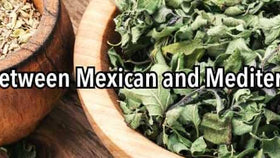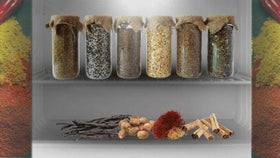Is all salt sea salt?
Salt is an integral element of human history, leaving a profound mark on culinary traditions, flavor expectations, food preservation techniques, and overall well-being. The source of salt often sparks curiosity, with some wondering whether all salt is derived from the sea or not. In this article, we will examine the origins and composition of salt, common misconceptions, regulations, and more.
Does All Food-Grade Salt Come From The Sea?
One of the most persistent misconceptions about salt is the belief that all salt originates from the sea. While it is true that sea salt is a type of salt derived from seawater, it's important to recognize that not all salt comes from this source. In fact a great deal of salt consumed worldwide does not come directly from the sea. That said, at one point or another, all salt on the earth today was likely brought to its harvesting location by ancient sea waters.
Does salt need to be sourced from the sea to be considered food-grade
While sea salt is adored by many culinary enthusiasts, chefs, and health-conscious consumers world-wide, there is no requirement stating all food-grade salt needs to be derived from seawater. According to the World Health Organization, for salt to meet the regulatory standards, it may be sourced from the sea, an underground salt mine, or another form of salty brine. Of course, the salt itself must be made up of primarily sodium chloride (97%), with a small percentage of other natural elements allowed (eg: magnesium, calcium, potassium, etc..), and very limited amounts of other properties like anti-caking agents and iodine also being allowed.
How does sea salt compare to table salt?
Because sea salt is obtained by gathering the remnants of evaporated sea water, it tends to be less processed and more nutrient-rich than most table salts.The additional minerals found in sea salt provide more depth in flavor, which is why sea salt is often used for finishing dishes. Table salt is also derived from evaporating water or brine to obtain the solids but it is further processed to remove any “impurities”, or elements that aren’t sodium chloride. This is the reason why fleur de sel and other sea salts are often presented as being healthier than table salt. Another difference between most sea salt and table salt is the consistency, with the former being comprised of flakes, pyramidal, and/or course crystals, and the smaller made up of fine crystalized grains.
*****Whether or not all salt should be considered sea salt is debatable.
As you can see, whether or not all salt is sea salt is somewhat open to debate. While the regulatory standards do not state that salt must come directly from the sea, we do know that sodium chloride was moved about by ancient sea waters. So, even if salt came from an underground salt mine and not the sea, at one point, it was “sea” salt. Regardless how you see it, it allows us to appreciate the diversity of salt varieties available and will hopefully prompt a bit of culinary exploration.










Slofoodgroup
Author